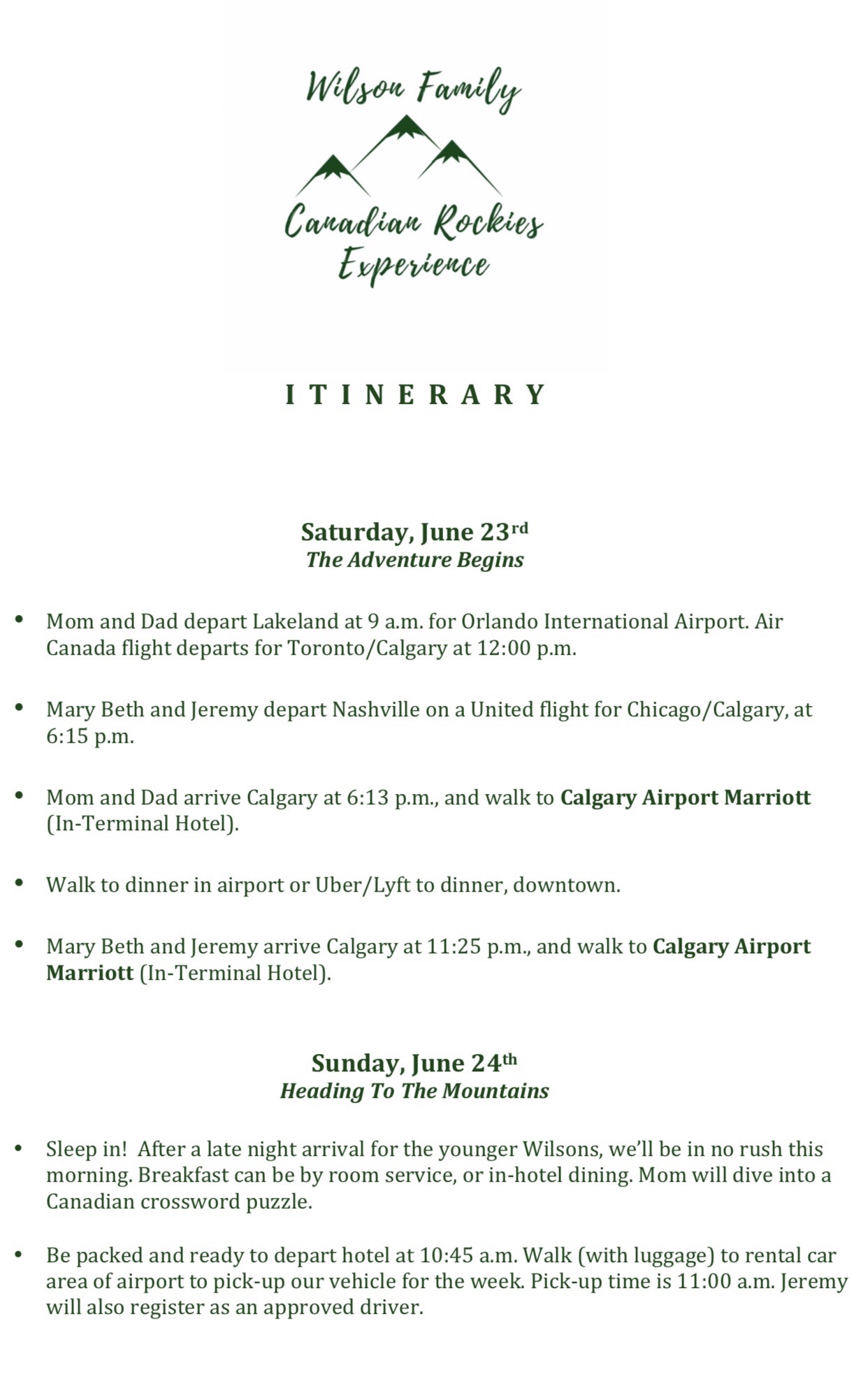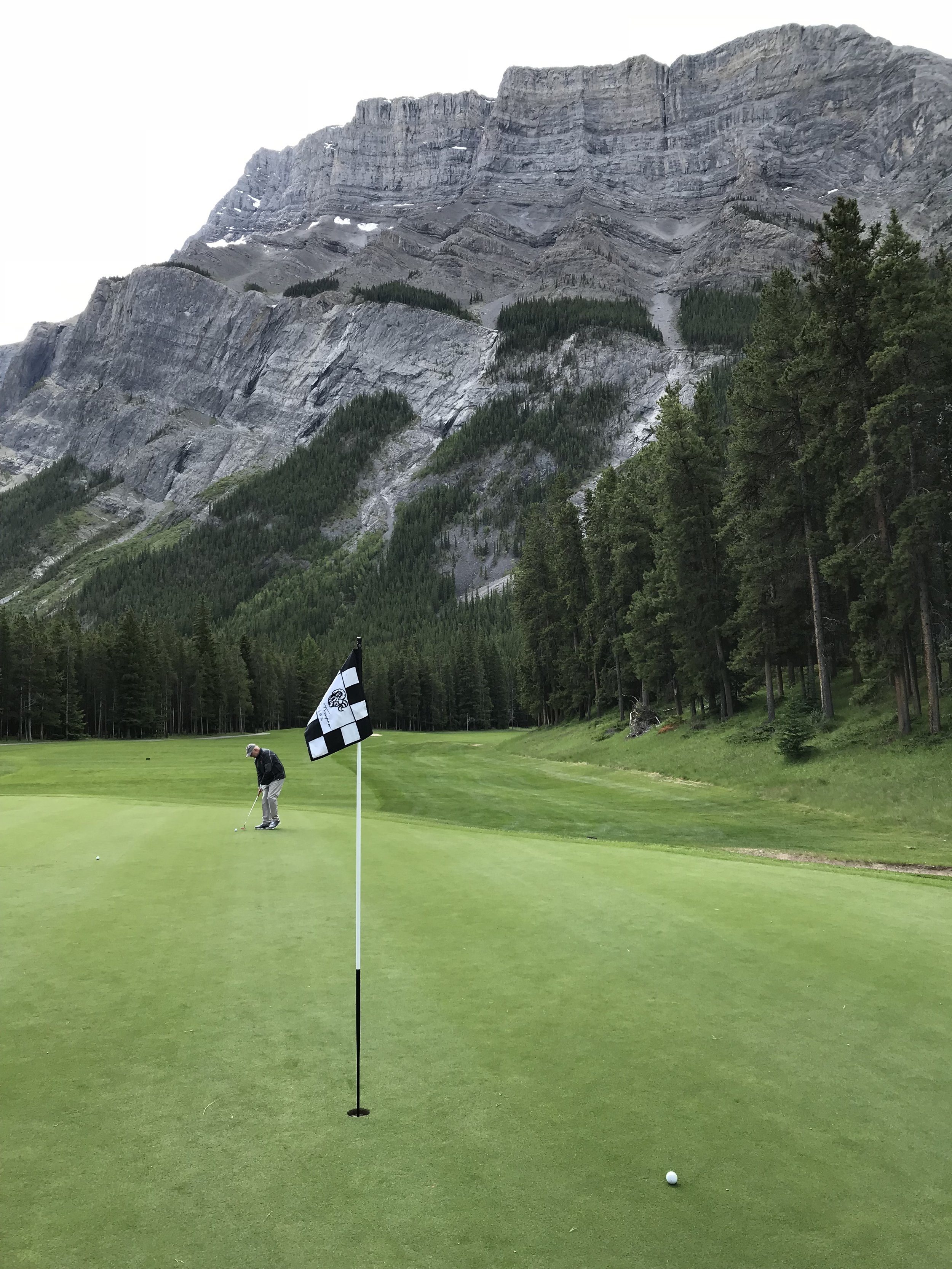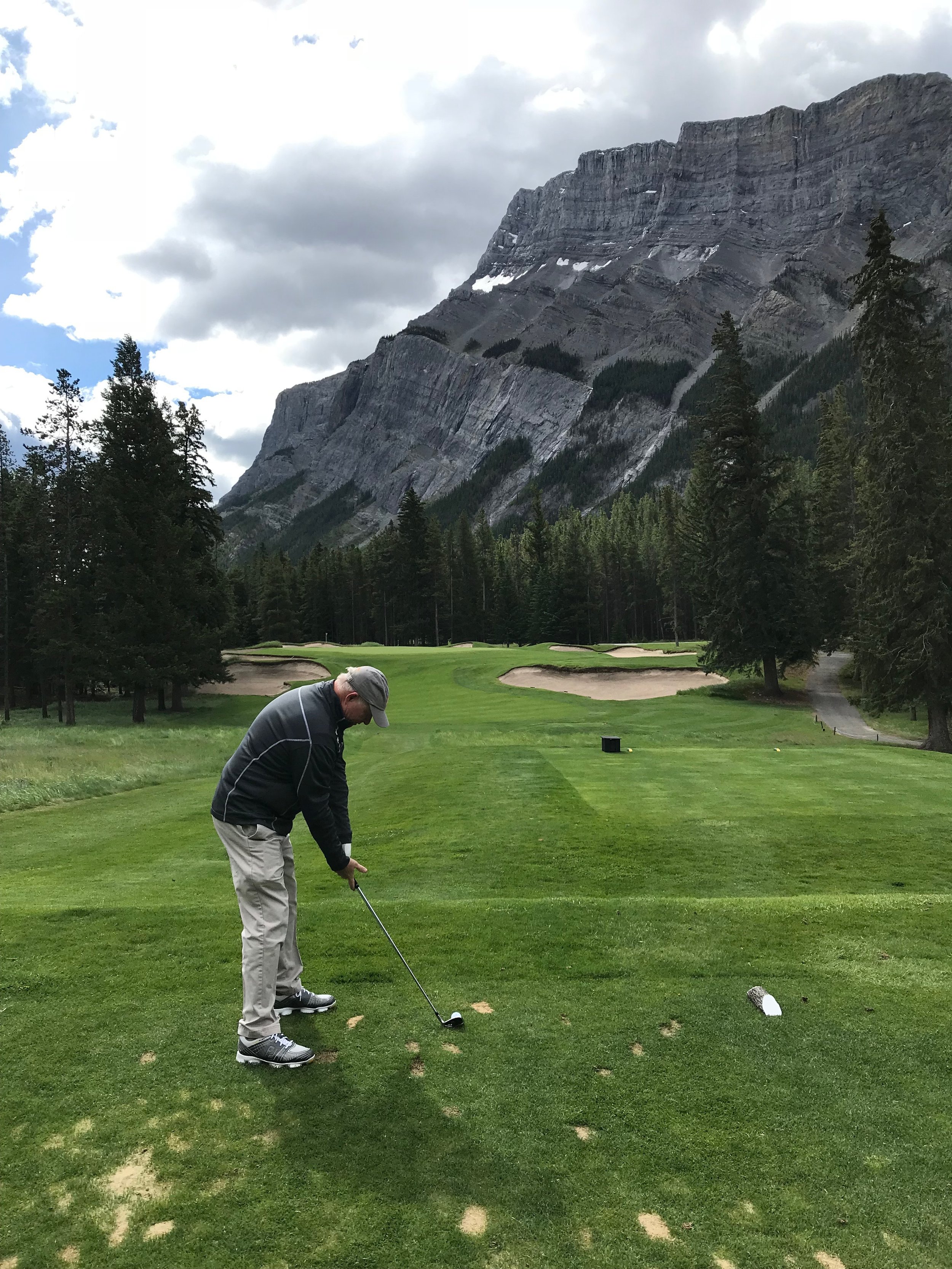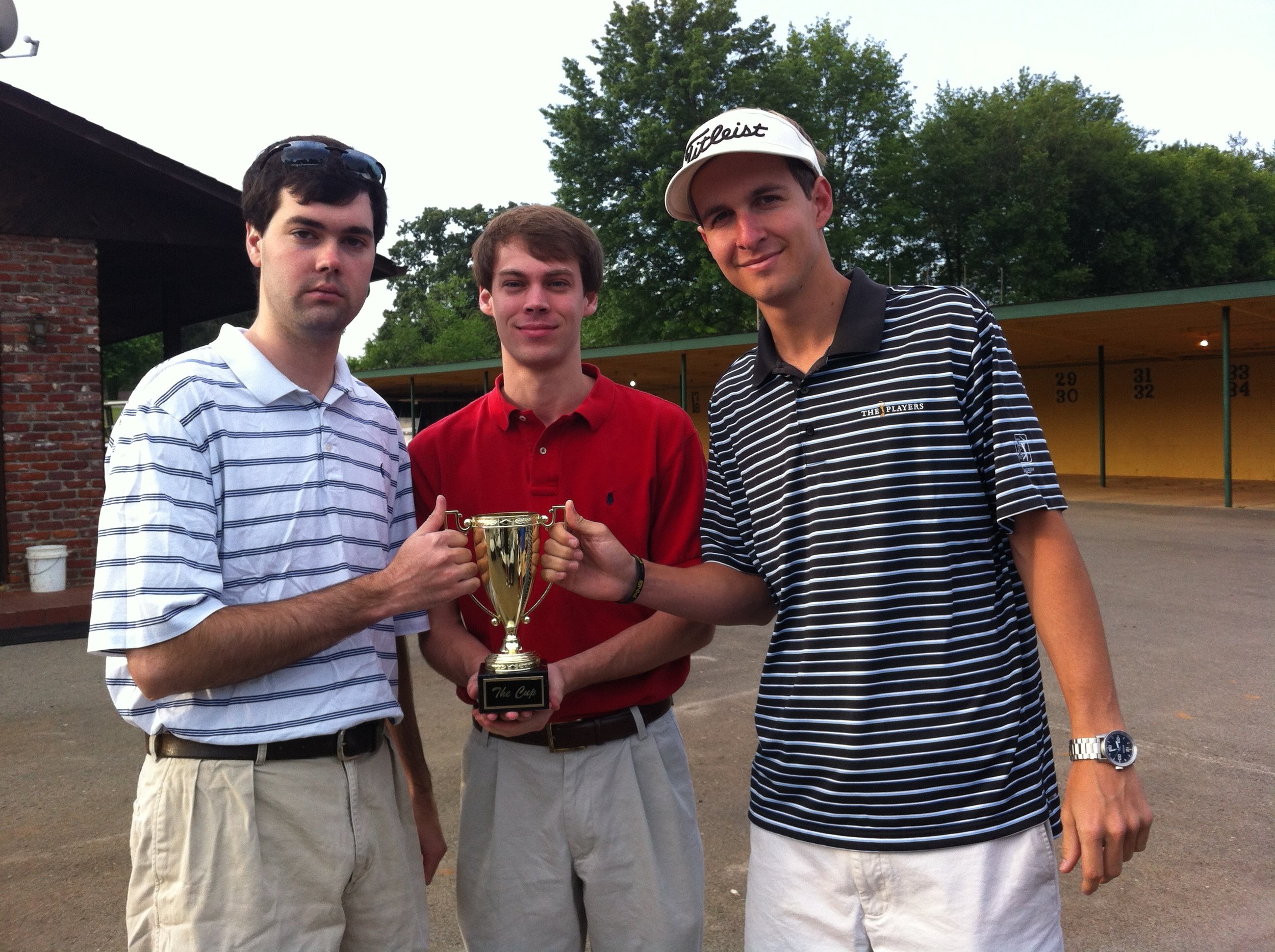>
“To me, a golf course is like a mirror. It’s a reflection of what was put into it. If you’re happy with just slapping shit around, and throwing a bunker there, and putting a green there and thinking ‘whatever, that’s fine’–what you get reflecting back at you is going to be dead behind the eyes. But for us, all the thought and effort and energy that was put into this place reflects back at you.”

Tires came to rest on the gravel outside. Inside the shed, I blew heat into my hands, trying to stay warm on an early-December morning while Nash, the new General Manager, cleaned up after the not-yet-house-broken shop dog, Birdie – a young black lab mix. The door to the shed swung open, and Rob walked in.
“Sorry I’m late, but you guys gotta see what I picked up on the way here.” Nash and I followed Rob out to his car, leaving Birdie behind as punishment for bad behavior.
Rob cut open a box of items custom made for pitching a project to a potential client, laying them out on the hood of his car, each piece possessing unique detail. The box closed, and back inside the shed he showed me paintings he had commissioned for pitching several other projects, all by artist Josh Bills.
“Is this a normal thing for golf course architects to do?” I asked. “No, definitely not,” he responded.
Don’t be fooled by his 6’6” frame and a bass voice typically reserved for Coors Banquet Beer ads… Rob Collins has a creative, child-like enthusiasm for his work, and it reverberates around this golf course he designed and built.

Why did I want to play with Rob?
“It’s like you guys just got back from church camp.”
That’s what my friend’s wife said two days after our first trip to Sweetens Cove this past August. All we were missing were homemade tie-dye shirts and friendship bracelets.
The experience stuck with us like it has with many others. Scroll through Sweetens Cove’s social media pages and you’ll see golfer after golfer rave about their trip, often comparing it to a spiritual experience.
Since then, I’ve wanted the answers to two questions: what makes this place feel sacred, and why does it stick with you like a religious experience? So I hopped in the car and drove down to South Pittsburg, Tennessee—located 30 minutes outside of Chattanooga—to play a round with the man who designed and built Sweetens Cove Golf Club.
Sweetens Cove: A Brief History
South Pittsburg is the kind of town where NPR would do a 10-episode true crimes podcast about the suspicious death of a local blacksmith – or some other career you weren’t sure was still a thing. Previously, the main attraction in town was the headquarters and factory store of Lodge Cast Iron skillet, an item that a young couple would register for two of and then never use either.
I first heard about Sweetens Cove a year and a half ago from a friend of mine who had just started playing golf. He raved about this course in South Pittsburg, TN that had only nine holes, a 10’x20’ green shed for a clubhouse, and a bright blue port-a-potty for a restroom. He was so new to the game that I didn’t trust him, like when your friend goes to New York for the first time and then tries to give you dinner recommendations. That’s how you end up at the Olive Garden in Times Square.

The story of Sweetens’ origin has been told countless times now, and even though this piece is about Rob, it’s important you have a general idea of how things got started. After losing his job with Gary Player’s firm due to the recession in 2008, Rob moved his family back home to Chattanooga. In 2010, he co-created King-Collins Golf Course Design firm with his business partner, Tad King, and their first project was a redesign of Sequatchie Valley Golf and Country Club, a completely flat, uninspiring, or as Rob describes it, “Sack of shit,” nine-hole golf course in South Pittsburg, TN. Rob and Tad rebuilt the course for $1 million—which would typically cost $8-10 million—and as the renovation neared completion the ownership abandoned the project. So Rob and another business partner negotiated terms to take over the lease, making him the principal designer, head pro, general manager, and entire maintenance crew.
The course had a quiet opening in April of 2015, limping along the first couple of years. But in August of 2017, a piece was written in the New York Times about Sweetens—one of the reasons Rob says the course actually survived—and soon afterwards the golf community latched onto this place, bringing more golf publications like the Golfer’s Journal, The Fried Egg, No Laying Up, and more to feature Sweetens. Now it has a cult following in the golf world, and people from all around the country make the trek to rural Tennessee.
Fore Please, Rob Collins Now Driving
Opening tee shots were hit into the cold December air, and as Rob and I walked down the first fairway of a completely empty course, I had two thoughts going through my head. First, I couldn’t remember the last time I felt short—it was maybe back in college when I was a manager for Tennessee’s basketball team, but the feeling was different because Rob didn’t ask me to do his laundry or lie to the coaching staff about skipping class that day.
Second, I had only met Rob 10-minutes prior, but I felt like I had known him for 10 years He has a comfortable, welcoming presence, just like the first hole of his golf course. “The first hole is an introductory chapter,” Rob said, “and by the second hole you’re getting into it.”
Rob wore jeans and work boots, the kind of attire you’d dread from a random pairing at your local muni, but this guy has some game. On number two we hit our approach shots from next to the “2Pac” bunker—a small pot bunker in the middle of an expansive fairway—and Rob knocked one stiff, later making the putt. It made me want to stop by Cabela’s on the way home to swap out my Puma’s for some Timberlands.
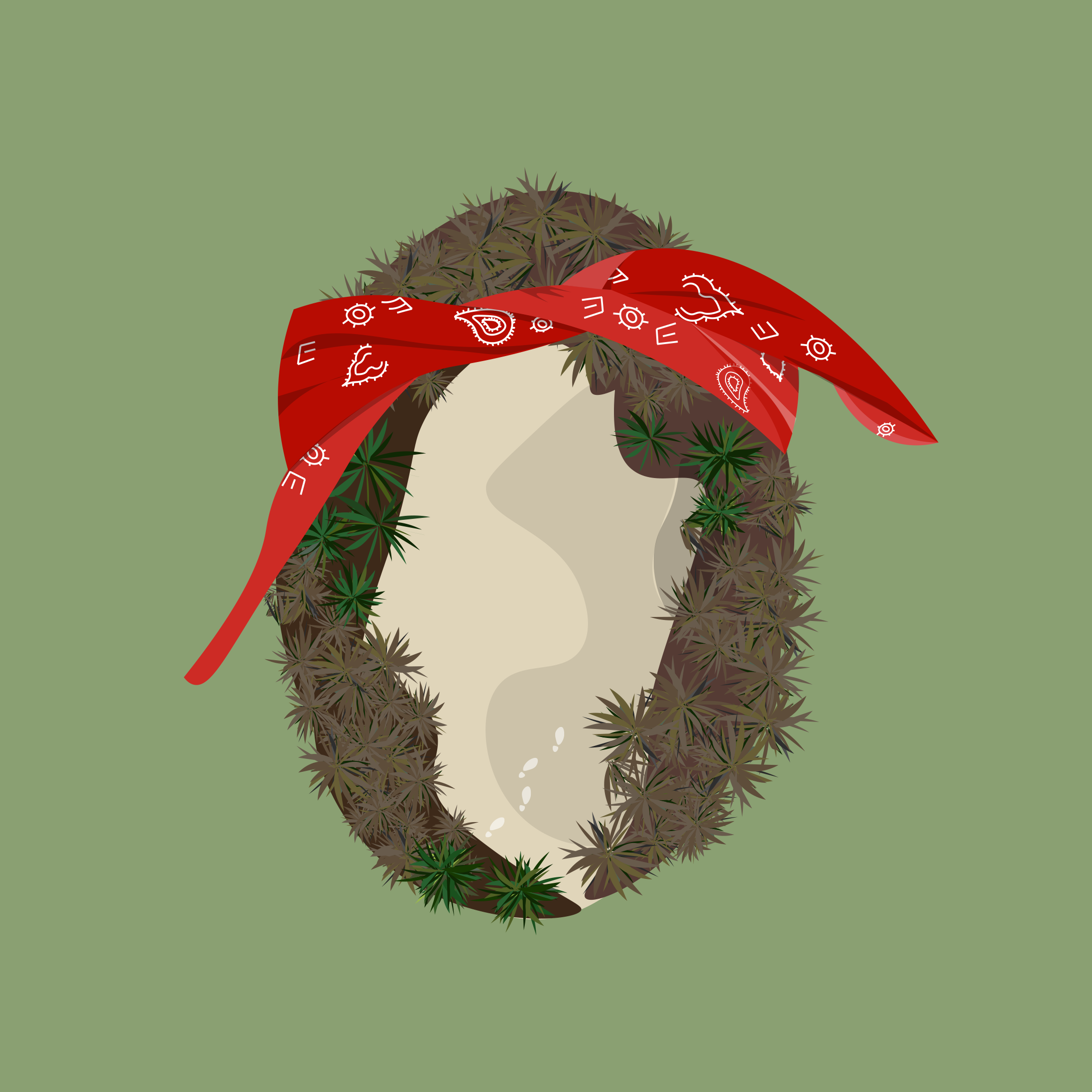
An Illustration of 2Pac Bunker
Up ahead on the third fairway, I got an early glimpse of what makes this place work.
Give A Damn
“Three, four, and five are the energy force of the course, the heartbeat that you can really fundamentally feel when you’re out there. It’s like chapters in a book, or acts in a play – the course is kind of building.”
In the third fairway, I shot Rob a distance on my rangefinder while he thumbed through his clubs, deciding which one to hit. He paused to show me what was in his bag. He has a set of custom-made irons from National Custom Works—a company co-founded by Patrick Boyd, Sweetens’ former GM who helped Rob get this place off the ground.
“I don’t have any numbers on these irons, but instead each one is stamped with the initials of someone involved in the Sweetens Cove story, so it took me a while to remember which club was which,” Rob told me. One club had Tad King’s initials, his business partner, alongside his wife, father, sister-in-law, Patrick, and several others. These gorgeous, handcrafted irons were made infinitely more beautiful with someone’s spirit attached to each. Side note: I like the idea of being able to blame someone else if I hit a bad shot with the club their initials are stamped on—I may have to get my own set.
Then a minute later as I walked up to the third green, Rob said, “Sorry for having my phone out, I’m just checking Zac’s score.” Zac Blair is a professional golfer who was playing that same day in the Web.com Tour’s Q-school in Arizona, attempting to keep his card and status for the following golf season. Rob’s firm has signed on to design and build The Buck Club, a course and idea that Zac conceived out in his native Utah and is currently raising money to get it started.
Rob fixed a pitch mark as we walked off the green, and in the heartbeat of the golf course, I started to see the heartbeat of the man who built it: Rob Collins gives a damn.
He gives a damn about everyone who helped Sweetens make it to this point, so he stamped their initials on his irons, carrying their spirit on his back anytime he plays. He gives a damn about his friend Zac, digging through his bag to find his phone on a cold morning to track Zac’s scores as he plays for his livelihood. He gives a damn by fixing random ball marks on every single green.
He gives a damn to commission paintings of potential golf holes so his clients can see his vision. He gives a damn to have a company custom make items so his clients can physically see and feel their brand’s potential with him. Furthermore, he gives enough of a damn to walk out into a freezing-cold puddle, boots completely submerged in water, to reach out and attempt to unclog a leaf-covered drain.

The damn givers—those are the kind of people that are inspiring to be around, and that’s who Sweetens attracts to their staff.
Their Superintendent, Brent Roberson—who we ran into after hitting our tee shots (into the water) on number six—used to work at a club in Jupiter, FL with a budget of $1.6 million and a staff the size of the Mormon Tabernacle Choir. But he took the job at Sweetens where the budget is significantly lower and with a staff the size of a pre-teen heartthrob boy band. His favorite part of working there? “Making it all work, getting all of the work done on a shoe-string budget with a skeleton crew.” Brent gives a damn.
Also, look at Nash Pater, the new GM, who has worked in the golf industry for 20+ years all over the country. He chose to come to Sweetens where his office that morning was a non-insulated shed with a portable heater. Nash gives a damn.
With three damn givers running the show, it creates a family atmosphere. Maybe they do have something in common with the Times Square Olive Garden after all: when you’re here, you’re family.
However, giving a damn is a learned trait, not one you’re born with, so on the seventh and eighth holes I wanted to discover what drove Rob to this point.
“Hey Peter, What’s Happening? I’m Gonna Need Those TPS Reports”
After growing up in Chattanooga and graduating from McCallie School, an all-boys college-prep academy, Rob spent his college years at Sewanee, where he was an art history major. How’d he pick that?
“It was easy,” Rob said, “I was interested in it, but I’ll be perfectly honest—I went to a high school that was competitive, two to three hours of homework each night, and I was completely burned out when I got to college.”
In college, he said he tried hard enough to get by, but he wasn’t serious about it. “I’m not proud of it, but that’s the reality. As a result of that attitude I wasn’t in a position to do anything worthwhile or interesting right out of college.”
How would he describe his jobs post college? “I was literally Peter from Office Space. I just had this shitty, sales assistant, paperwork job. I remember a time where I went to a movie during lunch break,” Rob said, making me laugh. I hope it was Lord of the Rings, or something over three hours.
“It was a reality check that doing that kind of stuff is not what I wanted to be doing with my life,” he said. “Around that time is when I got the courage up to go back to grad school and pursue what I really wanted to do.”
In 2002, he went to grad school at Mississippi State for landscape architecture with the sole intention of being a golf course architect. He credits architect Rick Robbins for giving him his first break, which was an internship. Then he got the job with Gary Player’s firm, his first real job in the industry, finally feeling like he was where he belonged, saying, “I felt like I was laying the ground work for the things I needed to learn, and I felt like I had a place.”
Ahead on the ninth hole, I was about to see what he did with that sense of belonging, and the reason this nine-hole golf course felt sacred.
Connecting the Dots
“To me, a golf course is like a mirror. It’s a reflection of what was put into it. If you’re happy with just slapping shit around, and throwing a bunker there, and putting a green there and thinking ‘whatever, that’s fine’ – what you get reflecting back at you is going to be dead behind the eyes. But for us, all the thought and effort and energy that was put into this place reflects back at you.”
Standing on the ninth tee, I looked over my shoulder at the rest of the property behind me, seeing all of the rolling mounds, the expansive waste bunkers, the undulating greens, and I couldn’t imagine that this land used to be completely flat. It reminded me of touring the David sculpture in Italy, and how Michelangelo described his creative process as asking, “What does this want to be?” and then pulling the sculpture out of the block of marble. I asked Rob if he was familiar with Michelangelo’s concept—completely forgetting that he was an art history major—and it lit a creative fire in his eyes. It was like I asked someone who’s obsessed with Crossfit if they’ve ever been to a gym.
“Absolutely—he was pulling away the unnecessary parts,” Rob said, then relating it to his work. “One of the biggest parts of golf course architecture for me is connecting the dots, eliminating the dead space, and tying the pieces together, where nothing is a throwaway. The best golf courses excel at that.”

The view from behind the ninth green, overlooking the entire golf course. (August, 2018)
We walked up the left side of the ninth hole, a 140-yard par three with a waste bunker running all the way from the tee to the green—and another waste bunker up on the hillside behind the green—both peppered with fescue, all protecting the 11,000 square foot green which falls drastically down the hillside from right to left.
“You can take this green as an example,” Rob continued. “This green is tying way up into that hill—the right side of this green is probably 10 feet higher than the left. Built on a hillside, the green takes up all the space it needs to. I could’ve stopped the green up here (motioning to the left center), but it ties the whole space together for it to be looping down in here, and then it has a tight relationship to the bunker, it goes down and relates well to that slope over there, and relates to that other slope. This thing filling up the space and tying the pieces together is so much of what good architecture is. I think, in a sense, Michelangelo is eliminating the unnecessary pieces of marble, and by tying greens and making it so big and all over the place, we are eliminating the unnecessary parts, too.”
That’s when I finally connected the dots. I came down here wanting to write about Rob and not the course, but then I realized that they are one and the same. The golf course mirrors his life—every hole a reflection of his story.
Number one is going back to grad school to pursue his passion. Number two is receiving an internship, getting his feet wet in the industry. Number three is landing his first full-time job in the industry, working with Gary Player’s firm. Numbers four and five are when he felt like he belonged in the industry, like he had a place. Number six is the recession, a low point—the hole where both of our shots came to rest in the bottom of the lake. Number seven is starting King-Collins with Tad King and accepting the renovation project of Sequatchie Valley. Number eight is building Sweetens Cove, taking a chance on a bold design. Number nine tee is taking on the lease of the property, looking ahead at the work left to finish the job. Finally, number nine green is his whole story coming together, because you can’t get to number nine until you make the journey from holes one through eight.
That’s why this place is sacred, because every part of his story is baked into the DNA of the golf course. The signature tree standing tall behind the green is the New York Times piece, finally putting Sweetens on the map. The cascading hills of the ninth green are the Golfer’s Journal article, which featured the beauty of Sweetens. Every part of his story resides here—even the hard times. The waste bunkers surrounding the ninth green represents the hours spent at dead-behind-the-eyes office jobs. He pulled his story out of a flat field in South Pittsburg, TN like a sculpture from a block of marble.
We need more people like Rob Collins—people who are fully alive and doing what they were put on earth to do. We need more damn givers and less people going to the movies on their lunch break.
I was inspired by Rob’s story, and I want to mirror his traits as I head into 2019, to really give a damn and pour myself into what I’m here to do.
As we walked off number nine back towards the shed/clubhouse/snack bar/pro shop, I had one more question that needed an answer.
Why does Sweetens stick with you like a religious experience?
I found that answer while we sat and talked on the steps of the shed after the round.
More in (a much shorter) part two, coming the first of the year.


